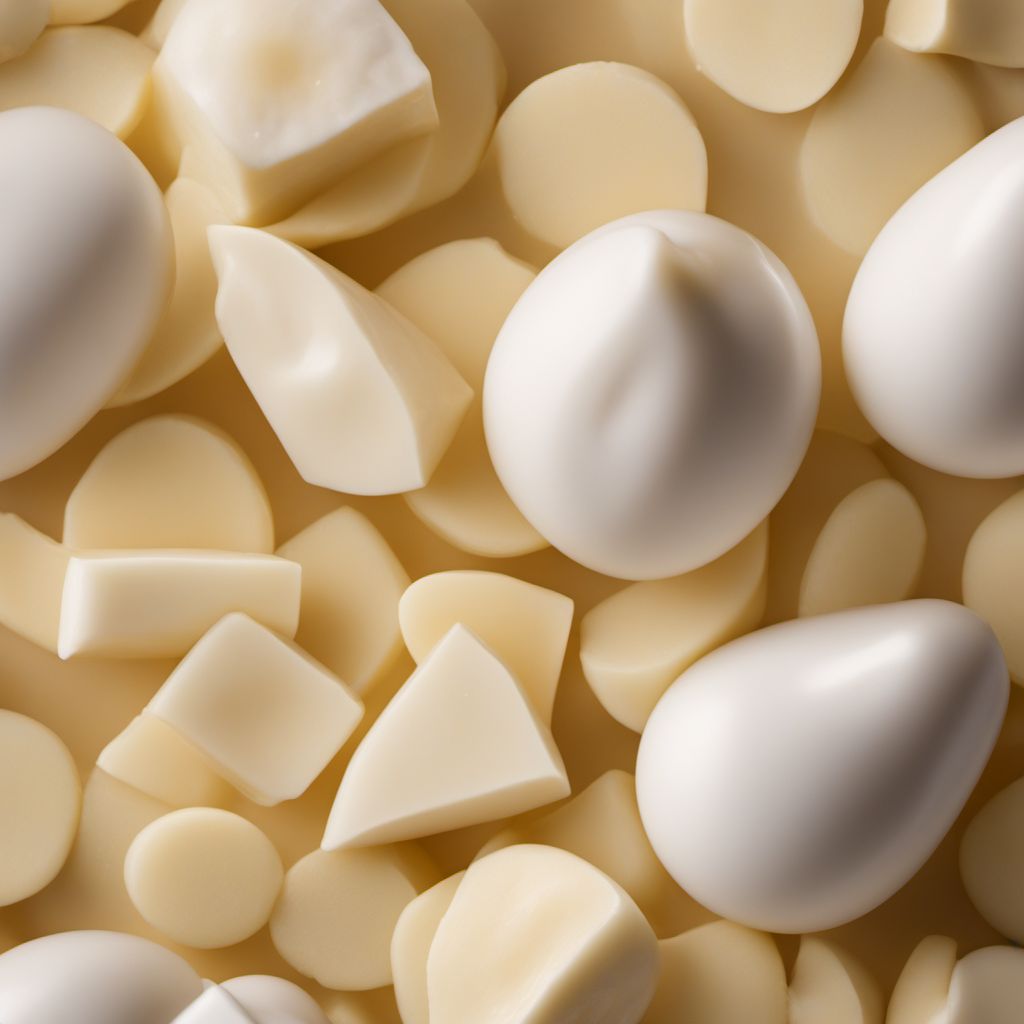
Ingredient
Dairy fats
The Creamy Essence of Flavor
Dairy fats encompass a variety of products, including butter, ghee, cream, and other dairy-based ingredients. Butter is made by churning cream until the fat separates from the liquid, resulting in a solid, spreadable fat. Ghee is clarified butter, where the milk solids are removed, leaving behind pure butterfat. Cream is the high-fat portion of milk that rises to the top and can be separated to create various types of cream, such as heavy cream or whipping cream. These dairy fats contribute a rich, creamy, and indulgent flavor to dishes, enhancing their taste and texture.
Origins and history
Dairy fats have been used in culinary traditions around the world for centuries. Butter, for example, has been a staple ingredient in European cuisines since ancient times. Ghee has a long history in Indian and Middle Eastern cuisines, where it is valued for its flavor and ability to withstand high heat. Cream has been enjoyed in various forms, from whipped cream in desserts to enriching sauces and soups. These dairy fats have become integral components of many global cuisines, adding depth and richness to dishes.
Nutritional information
Dairy fats are high in calories and saturated fats. They also contain vitamins A, D, E, and K, as well as trace amounts of other nutrients. While they can be enjoyed in moderation as part of a balanced diet, individuals with specific dietary restrictions or health conditions should consume them in moderation or seek alternatives.
Allergens
Dairy fats, particularly butter and ghee, contain milk proteins and lactose, making them unsuitable for individuals with dairy allergies or lactose intolerance. Those with specific dietary restrictions, such as vegans or individuals following a dairy-free diet, should avoid dairy fats altogether.
How to select
When selecting butter, choose products made from high-quality cream, preferably from grass-fed cows. Look for butter that is unsalted or salted, depending on your preference. Ghee can be purchased or made at home by clarifying butter. For cream, opt for products with a high fat content, such as heavy cream or whipping cream, to ensure a rich and creamy result.
Storage recommendations
To maintain the freshness and quality of dairy fats, store them in a cool, dry place away from direct sunlight. Butter and ghee should be kept in airtight containers in the refrigerator, while cream should be refrigerated and consumed within the recommended expiration date. Proper storage will prevent spoilage and maintain the flavor and texture of these dairy fats.
How to produce
Producing dairy fats on a small scale can be challenging, as it requires specialized equipment and knowledge. However, butter and ghee can be made at home by churning cream or clarifying butter, respectively. Detailed instructions and recipes can be found in cookbooks or online resources. Cream is typically produced on a larger scale in dairy farms or processing facilities.
Preparation tips
Dairy fats can be used in a multitude of ways in the kitchen. Butter is a versatile ingredient used for sautéing, baking, and spreading on bread. Ghee is commonly used in Indian cuisine for frying, sautéing, and adding richness to dishes. Cream is often used to enrich sauces, soups, desserts, or whipped for toppings. These dairy fats can be incorporated into both sweet and savory recipes, enhancing their flavor and texture.
Substitutions
Suitable substitutions for butter include margarine, coconut oil, or vegetable shortening, although the taste and texture may differ. Ghee can be substituted with coconut oil or vegetable oil, but the distinct flavor of ghee will be lost. Cream can be substituted with alternatives like coconut cream or non-dairy milk, although the richness and flavor may vary.
Culinary uses
Dairy fats are widely used in various cuisines and dishes around the world. Butter is a staple in baking, cooking, and spreading on bread. Ghee is commonly used in Indian, Middle Eastern, and Southeast Asian cuisines. Cream is often incorporated into sauces, soups, desserts, and beverages. These dairy fats add richness, flavor, and texture to a wide range of recipes.
Availability
Dairy fats are commonly available in most regions and countries, as they are widely produced and consumed. However, the quality and variety may vary depending on the local dairy industry and agricultural practices.

